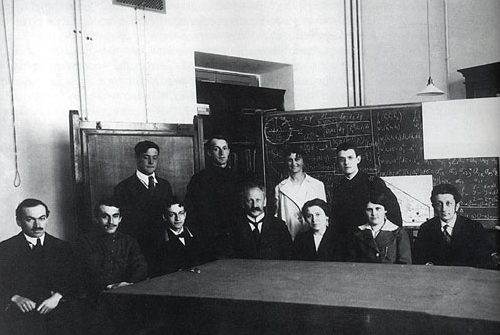Pyotr Lukirsky on:
[Wikipedia]
[Google]
[Amazon]
 Pyotr Ivanovich Lukirsky (; 13 December 1894 – 16 November 1954) was a Soviet physicist who specialized in experimental physics in radiation and optics. He was a student of
Pyotr Ivanovich Lukirsky (; 13 December 1894 – 16 November 1954) was a Soviet physicist who specialized in experimental physics in radiation and optics. He was a student of
Grave
Conviction information
{{DEFAULTSORT:Lukirsky, Pyotr 1894 births 1954 deaths People from Orenburg Academic staff of Saint Petersburg State University Full Members of the USSR Academy of Sciences Recipients of the Order of Lenin Recipients of the Order of the Red Banner of Labour Great Purge victims from Russia Soviet physicists Burials at Bogoslovskoe Cemetery
 Pyotr Ivanovich Lukirsky (; 13 December 1894 – 16 November 1954) was a Soviet physicist who specialized in experimental physics in radiation and optics. He was a student of
Pyotr Ivanovich Lukirsky (; 13 December 1894 – 16 November 1954) was a Soviet physicist who specialized in experimental physics in radiation and optics. He was a student of Abram Ioffe
Abram Fedorovich Ioffe ( rus, Абра́м Фёдорович Ио́ффе, p=ɐˈbram ˈfʲɵdərəvʲɪtɕ ɪˈofɛ; – 14 October 1960) was a prominent Soviet Union, Soviet physicist. He received the USSR State Prize, Stalin Prize (1942), the ...
and became a fellow of the Physico-Technical Institute. He contributed to industrial developments as well as to crystallography and basic physics.Life and work
Lukirsky was born inOrenburg
Orenburg (, ), formerly known as Chkalov (1938–1957), is the administrative center of Orenburg Oblast, Russia. It lies in Eastern Europe, along the banks of the Ural River, being approximately southeast of Moscow.
Orenburg is close to the ...
where his father was a land surveyor. He was educated at Novgorod
Veliky Novgorod ( ; , ; ), also known simply as Novgorod (), is the largest city and administrative centre of Novgorod Oblast, Russia. It is one of the oldest cities in Russia, being first mentioned in the 9th century. The city lies along the V ...
where the family moved and in 1912 he joined St. Petersburg University
Saint Petersburg State University (SPBGU; ) is a public research university in Saint Petersburg, Russia, and one of the oldest and most prestigious universities in Russia. Founded in 1724 by a decree of Peter the Great, the university from the be ...
and graduated in 1915. He attended the seminars in physics of A. F. Ioffe. In 1918 he became a fellow at the physics institute founded by Ioffe and began to work on electron scattering from the surface of liquid mercury. He experimentally measured Planck constant
The Planck constant, or Planck's constant, denoted by h, is a fundamental physical constant of foundational importance in quantum mechanics: a photon's energy is equal to its frequency multiplied by the Planck constant, and the wavelength of a ...
with great accuracy. He also worked on X-ray (10–150 Å) scattering, conducted experiments on the polarization of X-rays, Compton scattering and photoelectric ion emission (the so-called photoeffect). In the 1930's he was a research consultant in the production of vacuum tubes at the Svetlana plant. He was also a noted lecturer and taught at the Leningrad University from 1919 to 1938. In 1938 he was arrested on charges of "fascist" activities by the NKVD
The People's Commissariat for Internal Affairs (, ), abbreviated as NKVD (; ), was the interior ministry and secret police of the Soviet Union from 1934 to 1946. The agency was formed to succeed the Joint State Political Directorate (OGPU) se ...
(as part of Stalin's Great Purge
The Great Purge, or the Great Terror (), also known as the Year of '37 () and the Yezhovshchina ( , ), was a political purge in the Soviet Union that took place from 1936 to 1938. After the Assassination of Sergei Kirov, assassination of ...
which targeted a number of other physicists including Pyotr Kapitsa
Pyotr Leonidovich Kapitsa or Peter Kapitza (, ; – 8 April 1984) was a leading Soviet physicist and Nobel laureate, whose research focused on low-temperature physics.
Biography
Kapitsa was born in Kronstadt, Russian Empire, to the Bessar ...
and Matvei Bronstein. Bronstein had been involved in the hiring of Lukirsky.) and sent to a labour camp in Usollag and was rehabilitated only in 1942 after numerous petitions from his colleague physicists. After his release he returned to the Physico-Technical Institute, heading it from 1945. He also worked at the Radium Institute from 1943 and was involved in problems in nuclear physics.
References
External links
Grave
Conviction information
{{DEFAULTSORT:Lukirsky, Pyotr 1894 births 1954 deaths People from Orenburg Academic staff of Saint Petersburg State University Full Members of the USSR Academy of Sciences Recipients of the Order of Lenin Recipients of the Order of the Red Banner of Labour Great Purge victims from Russia Soviet physicists Burials at Bogoslovskoe Cemetery